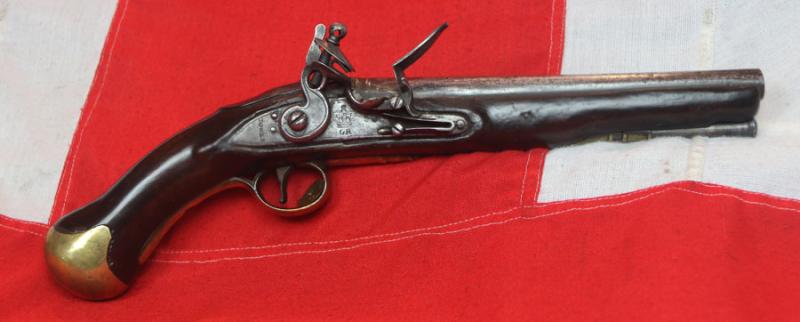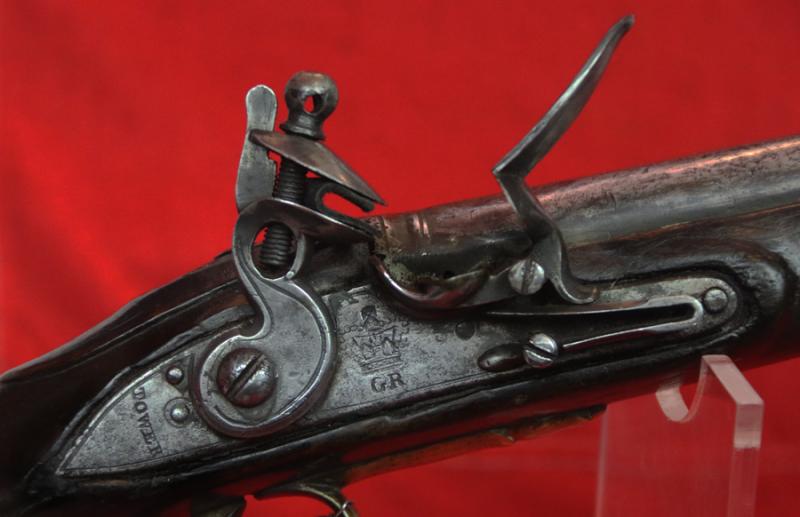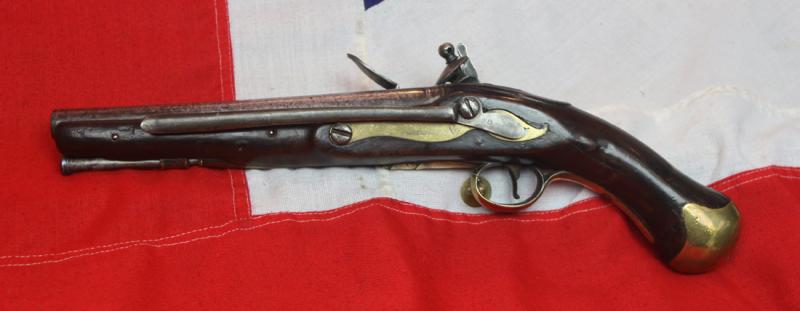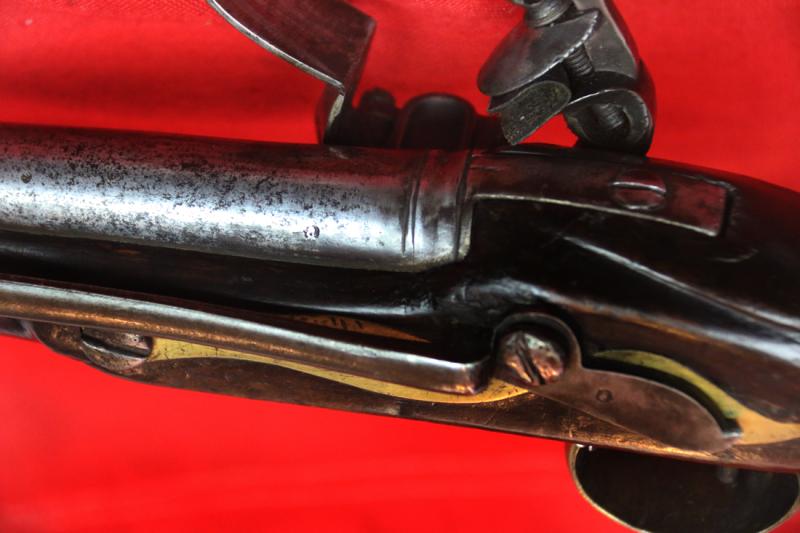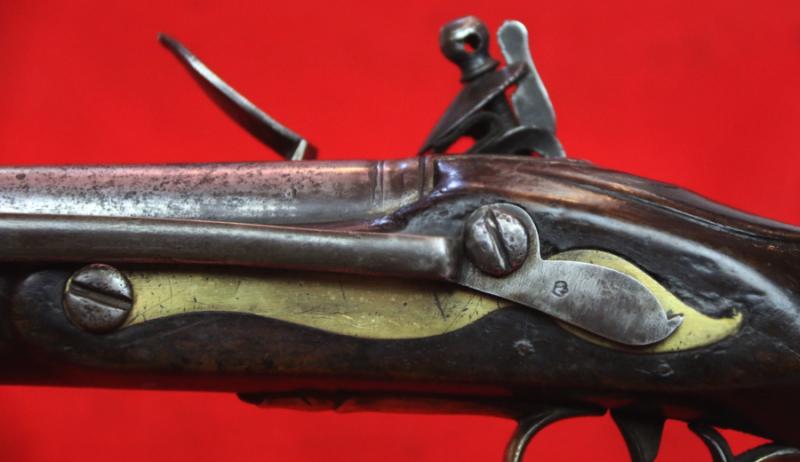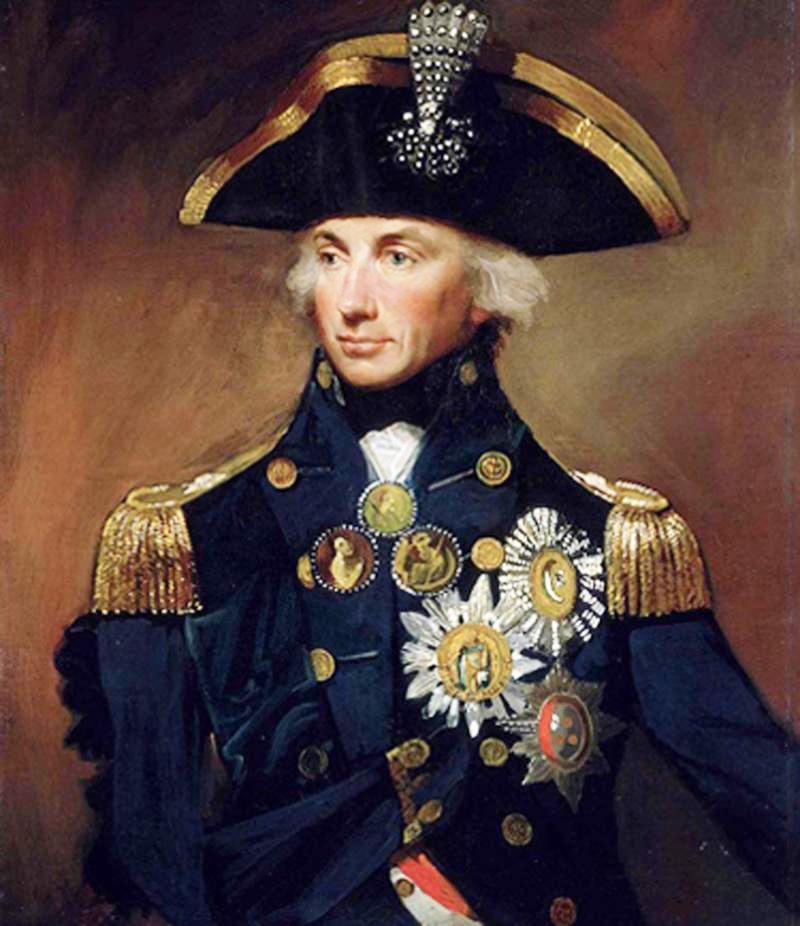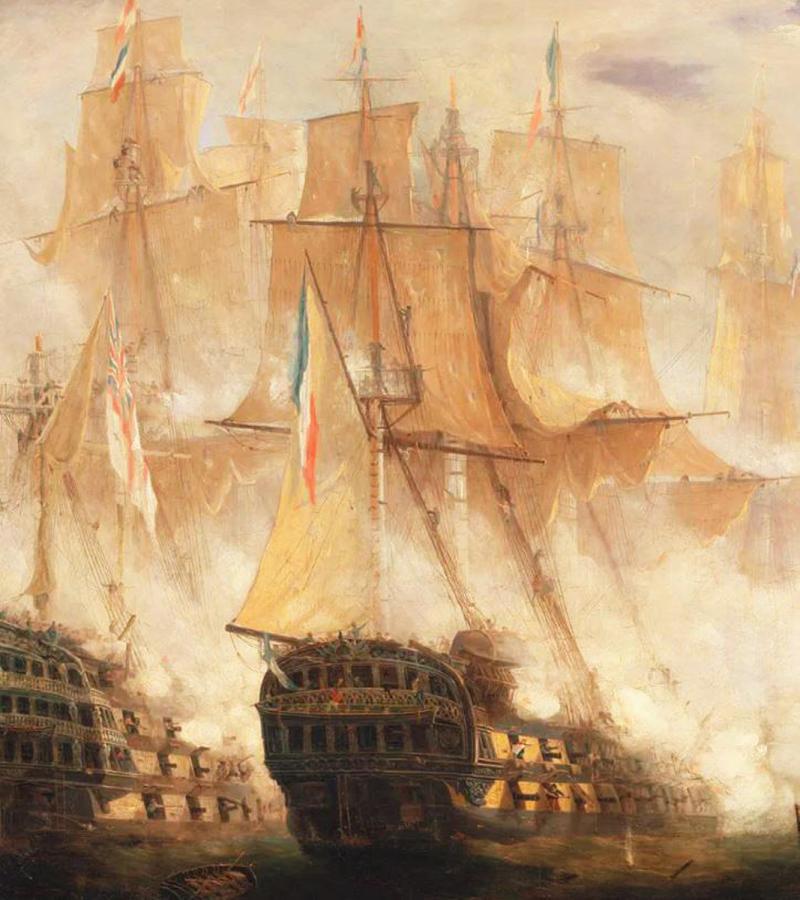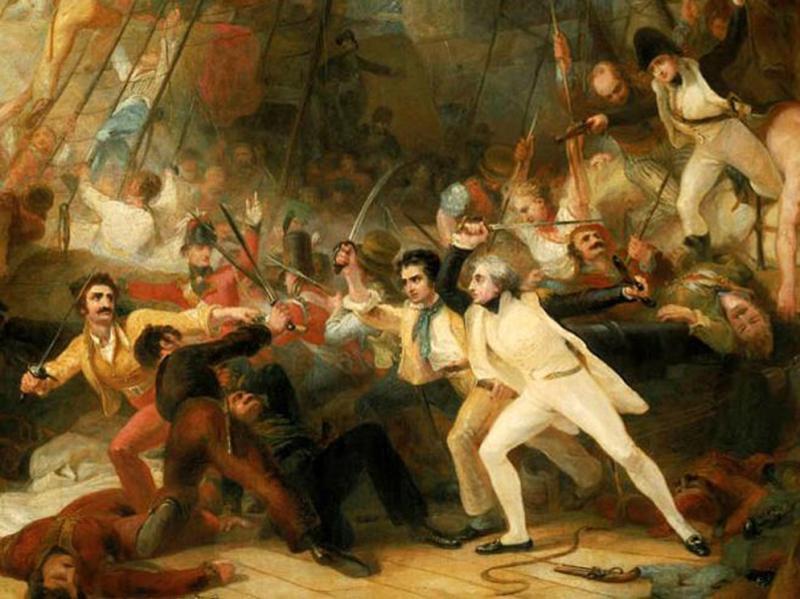An 1801 Pattern, Tower of London, Royal Navy Issue, Historic Nelson Period, Short ‘Sea Service Pistol’, With Original Belt Hook, Tower of London GR Crown Lock, Fine Stock & Skull Crusher Butt, Used at the Battle Of Trafalgar Period
The King George IIIrd issue British Royal Naval Sea Service pistol has always been the most desirable and valuable pistol sought by collectors.
Exactly as issued and used by all the British Ship's-of-the-Line, at the Battle of Trafalgar in 1805.
Such as;
HMS Victory,
HMS Temeraire,
HMS Dreadnought,
HMS Revenge,
HMS Agamemnon,
HMS Colossus
HMS Leviathan &
HMS Achilles.
Some of the most magnificent ships, manned by the finest crews, that have ever sailed the seven seas.
The Battle of Trafalgar, (October 21, 1805), the most important naval engagement of the Napoleonic Wars, and in fact of the entire century, established British naval supremacy for more than 100 years; it was fought west of Cape Trafalgar, Spain, between Cádiz and the Strait of Gibraltar. A fleet of 33 ships (18 French and 15 Spanish) under Admiral Pierre de Villeneuve fought a British fleet of 27 ships under Admiral Horatio Nelson. A resounding victory for the mighty Royal Navy and the ultimate demonstration of Nelson’s mastery of the sea, against the combined enemy fleet. This battle has since been taught ever since by every naval college the world over as an illustration of his genius tactics and command skill in battle.
At the end of September 1805, Villeneuve had received orders to leave Cádiz and land troops at Naples to support the French campaign in southern Italy. On October 19–20 his fleet slipped out of Cádiz, hoping to get into the Mediterranean Sea without giving battle. Nelson caught him off Cape Trafalgar on October 21.
Villeneuve ordered his fleet to form a single line heading north, and Nelson ordered his fleet to form two squadrons and attack Villeneuve’s line from the west, at right angles. By noon the larger squadron, led by Admiral Cuthbert Collingwood in the Royal Sovereign, had engaged the rear (south) 16 ships of the French-Spanish line. At 11:50 AM Nelson, in the Victory, signaled his famous message: “England expects that every man will do his duty.” Then his squadron, with 12 ships, attacked the van and centre of Villeneuve’s line, which included Villeneuve in the Bucentaure. The majority of Nelson’s squadron broke through and shattered Villeneuve’s lines in the pell-mell battle. Six of the leading French and Spanish ships, under Admiral Pierre Dumanoir, were ignored in the first attack and about 3:30 PM were able to turn about to aid those behind. But Dumanoir’s weak counterattack failed and was driven off. Collingwood completed the destruction of the rear, and the battle ended about 5:00 PM. Villeneuve himself was captured, and his fleet lost 19 or 20 ships—which were surrendered to the British—and 14,000 men, of whom half were prisoners of war. Nelson was mortally wounded by a sniper, but when he died at 4:30 PM he was certain of his complete victory. About 1,500 British seamen were killed or wounded, but no British ships were lost. Trafalgar shattered forever Napoleon’s plans to invade England.
It is clear this pistol has seen a fair amount of close quarter action, very possibly at Trafalgar, as it has several areas of field-service armourer's repair to the stock. However, this work shows it has been used for the very purpose for which it was designed for, repelling boarders, or, used during boarding actions. It has it's usual 9" barrel, as the barrels were regulatory shortened by official Admiralty order, to 9", from 12 inches long, as it's length of barrel of 12 inches was considered simply too unwieldy in close combat situations, even before the Napoleonic wars, thus its official title was, the ‘1801 Royal Navy Short Sea Service Pistol’
The first pattern date applied to the Sea Service pistol in this form is 1716. The Pattern 1716 Sea Service Pistol was very similar to the Land Service Pistol of the same era, in overall appearance and design. The pistol was a single shot, flintlock ignition gun with a long, round iron smoothbore barrel in “pistol bore”, approximately .56 calibre. The guns were of simple, but robust construction, and like their land service brethren were built with an eye towards the gun seeing equal service as a club, as it did as a firearm! In fact, US Naval manuals from the first decades of the 1800s included instruction on how to throw the pistol at an enemy, a tactic that no doubt originated in the Royal Navy.
Code: 25312

